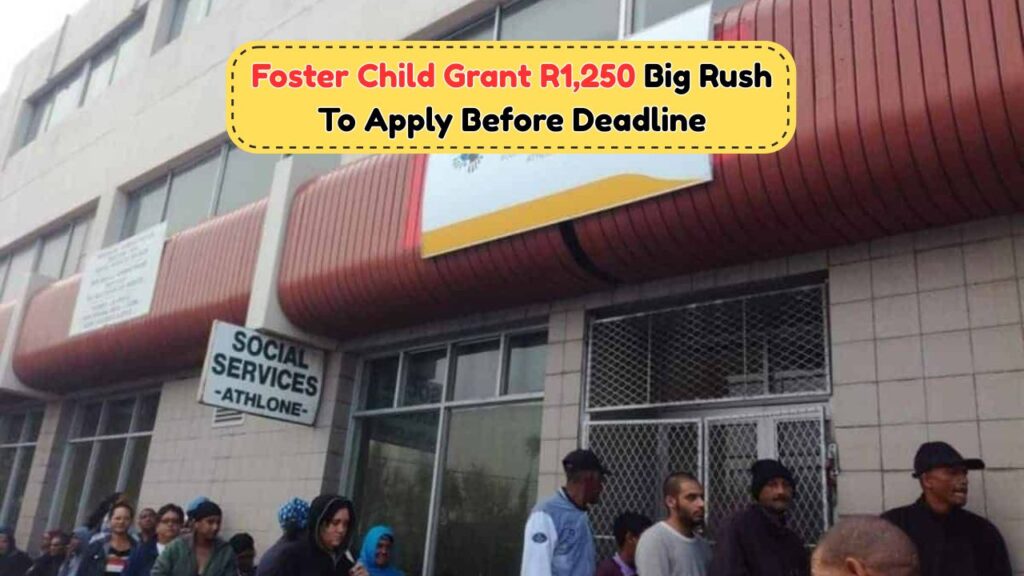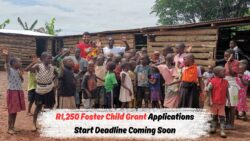Foster Child Grant 2025: The South African government is once again stepping up to support vulnerable children and their caregivers with the Foster Child Grant, set at R1,250 for 2025. This initiative aims to provide financial assistance to foster parents, enabling them to offer a nurturing and stable home environment to foster children. With the rising cost of living, this grant is a crucial resource for many families across the nation. As the application period opens, it’s important for potential applicants to understand the eligibility criteria, the application process, and the benefits of this grant. By tapping into this support system, foster parents can ensure a brighter future for the children under their care.

Understanding the R1,250 Foster Child Grant Eligibility in 2025
The R1,250 Foster Child Grant is specifically designed to assist those who have taken on the noble responsibility of fostering children who are unable to live with their biological parents. To qualify for this grant in 2025, applicants must meet several key criteria. Firstly, the child must be legally placed in foster care as per the court’s directives. This ensures that the grant is only allocated to those who have been officially recognized as foster parents by the legal system. Additionally, the child should be under 18 years of age, although in certain circumstances, the grant can be extended until the child turns 21, particularly if they are still attending school. Another critical requirement is that the foster care arrangement must be reviewed and approved by the Department of Social Development. This department plays a crucial role in verifying the authenticity of the foster care relationship and ensuring that the funds are appropriately used for the welfare of the child. Understanding these eligibility criteria is the first step towards securing this much-needed financial aid, which is vital for providing a stable and nurturing home environment for foster children.
How to Successfully Apply for the Foster Child Grant in 2025
Applying for the Foster Child Grant in 2025 involves several straightforward steps, but preparation is key to ensuring a smooth process. Prospective applicants should start by gathering all necessary documentation, such as the child’s birth certificate, the court order placing the child in foster care, and valid identification for the foster parent. Once these documents are in order, the next step is to visit the nearest South African Social Security Agency (SASSA) office to submit the application. It’s advisable to make an appointment in advance to avoid long waiting times. During the application process, a SASSA officer will assist in reviewing the documents to ensure everything is in order. It’s important to note that there is no fee for applying for the grant, making it accessible to all eligible foster parents. After submission, the application undergoes a verification process, and successful applicants will be notified through their chosen communication method. The funds are usually disbursed monthly, either through direct bank deposits or at designated pay points. By following these steps, foster parents can secure the financial support they need to provide for their foster children in 2025.
The Impact of the Foster Child Grant in South Africa
The Foster Child Grant has had a profound impact on the lives of countless children and families across South Africa. By providing financial assistance, the grant enables foster parents to offer better living conditions, educational opportunities, and healthcare access to the children in their care. For many foster families, the grant is a lifeline that alleviates financial stress and allows them to focus on creating a nurturing environment. Moreover, the grant contributes to reducing poverty and inequality by supporting vulnerable children who might otherwise lack access to basic necessities. Beyond the immediate benefits to foster families, the grant also plays a vital role in the broader social fabric of South Africa. By investing in the well-being of foster children, the government is effectively contributing to the development of future generations who can participate meaningfully in society. The positive ripple effects of this grant are felt across the nation, as it supports not only the children and families directly involved but also the communities in which they live.
Looking Ahead: The Future of Foster Child Grants in South Africa
As South Africa looks towards the future, the Foster Child Grant remains a critical component of social welfare policy. In 2025 and beyond, there is potential for the grant to continue evolving to meet the changing needs of foster families. Policymakers are constantly evaluating the grant’s effectiveness and exploring ways to enhance its impact, possibly through increased funding or expanded eligibility criteria. There is also an ongoing discussion about integrating additional support services, such as counseling and educational programs, to further assist foster children and their caregivers. These enhancements could play a significant role in ensuring that foster children receive comprehensive care that addresses not only their immediate needs but also their long-term development. As South Africa continues to prioritize the welfare of its children, the Foster Child Grant is poised to remain a cornerstone of support, empowering foster families to thrive and nurturing a brighter future for all.




